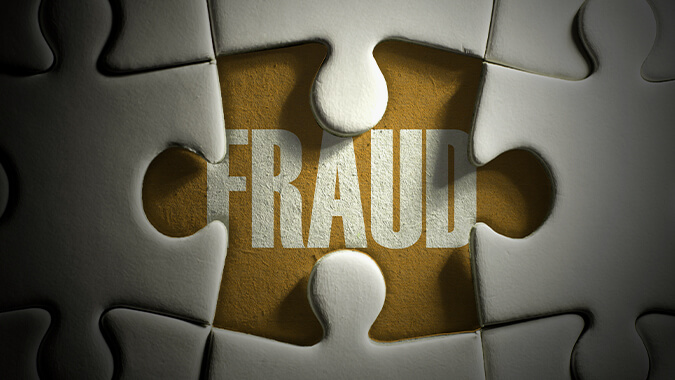
Fraud in the Age of Coronavirus – What to Do When the SBA Knocks at the Door
- Published
- Mar 15, 2021
- Topics
- Share
This article is published as it originally appeared in ABL Advisor.
Setting the Stage …
Forensic accountants and many in the financial advisory world are intimately familiar with the “Fraud Triangle” developed by criminologist Donald R. Cressey and promoted by the Association of Certified Fraud Examiners (ACFE) as a visualization of the three conditions that must co-exist with respect to a potential fraudster in order for him or her to actually perpetrate a scheme: (a) pressure, (b) opportunity and (c) the ability to rationalize her or his contemplated actions.
The recession resulting from the Novel Coronavirus (COVID-19) pandemic, while not unprecedented in severity, is certainly the deepest we have seen since the 2008 economic crater and may be even deeper – presenting for some extreme pressure that may not otherwise have existed, thereby raising the specter of more widespread instances of financial fraud. That not-too-distant crisis and its aftermath provide invaluable insight into the fraud environment in which the world is currently enmeshed.
After the conclusion of that last major recession, the ACFE conducted a survey to help the business and fraud-examination communities understand the impact of the crisis. The results were remarkable and unfortunate: More than 80 percent indicated that they believed that fraud levels increase in such environments, and the majority stated that they had observed an uptick in the number of frauds of which they were aware. (i)
More recent statistics support the hypothesis that economic downturns beget fraud upturns.
ACFE recently – in May and August of 2020 – conducted two inquiries of its members. In the first, 68 percent of respondents stated that they had observed increases in fraud over the prior quarter; but, just three months later, 77 percent answered similarly, representing an increase of more than 13 percent as the recession became more prolonged. Moreover, 76 percent indicated that they expected to see increases over the following year in the broad area of loan and bank fraud, which includes fraud related to the federal government’s Payroll Protection Program (PPP). (ii)
By all indications, the prospect of fraud against lenders participating in the PPP – and their guarantor, the U.S. Small Business Administration (SBA) – is of great interest to the Department of Justice (DoJ). As of January 25, 2021, there were approximately 94 active cases involving alleged PPP fraud in which defendants have been charged by the DoJ – a significant increase from September, in which there were approximately 57 cases; further, hundreds of additional leads are being investigated. (iii,iv)
These circumstances are of great concern to countless small businesses and not-for-profit entities (NPEs) that received PPP loans in the stampedes by applicants, desperate for lifelines – that occurred when different rounds of the funding were made available – at a time when the government’s own guidance was inconsistent at best. Surely, there have been instances of intentional deceit; however, financial institutions, regulatory and prosecuting agencies may not easily distinguish between honest mistakes and misinterpretations – even those that occurred despite good-faith efforts of the applicants to “get it right” – and intentional malfeasance in the process through which loans were obtained and/or forgiveness may be sought.
So, What if Your Borrower is Chosen for Audit?
Imagine that your borrower’s organization has submitted its loan PPP forgiveness application – Form 3508 and, if applicable, either form 3509 or 3510. Forgiveness has been approved by the lender, and now your borrower is awaiting final sign off and approval from the SBA.
Your borrower just received the unwelcome email: “The SBA has chosen your PPP loan for audit.” Most are routine; the SBA intention in deploying $580 billion was to bolster the economy during a severe dip – and not necessarily to claw these monies back; but, make no mistake, the DoJ has set aside significant resources throughout the country to fight fraud and pursue those that it has reason to believe committed dubious acts.
As part of the path of your borrower’s forgiveness application completion and/or potential audit, here are some sudden thoughts and second thoughts that are difference-making considerations lenders and trusted advisors may wish to share with their borrowers participating in the PPP:
1. Thoroughness Is Critical
A complete and thorough package of back up and support information is essential. And it will make supporting the request a smoother process, not only at the lender level but with the SBA as well. Certainly, payroll expenses and full-time equivalent employees (FTEs) will be the largest item. Strongly suggest that your client’s outside vendors or internally prepared payroll records tie in, both at the summary and detail levels. Also ensure that complete documentation regarding changes in FTEs is included. Preserving jobs and employment was a key component to the original PPP.
Qualification of other non-payroll expenses for consideration in forgiveness applications has been expanded. Again, ensure that the support data is complete and thorough. If there is not back up for every line item both payroll and non-payroll expenses and if there is not an understanding of each item, than there is a likelihood the application is not complete enough.
2. Responsiveness Is Key
Your clients should begin the response process as early as possible; if selected for review, the recipient usually has ten days to reply. Hopefully, the documentation is a complete package, as outlined above, which makes the timely response easier. And, under the SBA’s guidance, if the loan was for more than $2 million, it almost assuredly will be selected. Suggest that your borrower go back and review the original PPP submission, which, in most cases, at this point, is more than eight months old. Recalling the context and specificity made in the original application is relevant. Certainly circumstances change. And being able to verify the forgiveness application is consistent with the original application, or as or maybe more important being able to explain and articulate the variances, is likely to a difference-maker – especially given that scrutiny during the forgiveness process has increased from what was originally anticipated.
3. Consider Whether The Organization Meets SBA FAQ 31 “Needs Test.”
FAQ 31 from the SBA outlines what the administration believes is the definition of “needing the money” and meeting the considerations of “economic uncertainty.” It is one of the most critical answers that your borrowers will provide. The borrowers need to consider whether economic uncertainty but them in a position that they “needed” a PPP Loan and did they consider other means available. And parenthetically, if they are pondering applying for a PPP2 and ended up having a “good” 2020, it may be hard to justify “economic uncertainty” having a negative impact.
-
- Form 3509 or Form 3510, whichever is applicable, gives the applicant the opportunity to demonstrate this necessity in 1,000 character statement, multiple times.
- The ability to address this requirement, regardless of the loan size, will be a differentiator.
4. Use Available Resources
Everybody has an “inner circle” consisting of people that have been known for a long time, whether professionally or personally. That support network is a resource that is usually instrumental to your clients’ success. Encourage your client to employ and use those excellent resources to act as sounding boards not only as the follow through on the entire forgiveness process but as they would prepare as if the SBA were to come calling. Thorough preparation and considerations, and being able to address stakeholders’ and SBA’s likely concerns will position ALL stakeholders well.
5. A Final Consideration
There have been significant discussions about the forgiveness process and the additional paperwork and support information needed. It is worth considering patience and decorum as part of the “new normal.” If an applicant is being given the chance to have debt forgiven, the offeror of such consideration (in this case lending institutions and, ultimately the SBA) has the right to ask any reasonable questions it wants. And even if the loan is not fully forgiven, having a loan at 1 percent over two to five years, is still pretty darn good.
The responses provided by the Borrower will be viewed with scrutiny, given the inquisitive environment that currently exists. So, if, during the response-preparation process, that “second look” back at the original application raises some questions about its accuracy and fairness, then it is not time to “go it alone.” It is at this point that all will find the advice of financial advisory services professionals who are well-versed in the intricacies of PPP, and the representation of expert counsel, invaluable.
EisnerAmper understands the disruption the COVID-19 is causing, its impact on financial and operational performance, and its effect on lender relationships. We work in collaboration with our clients and their multiple constituencies to improve operating performance, reduce/right size expenses, and increase cash flow for all stakeholders.
Footnotes:
(i) Dorris, Bruce. “Coronavirus Pandemic Is a Perfect Storm for Fraud.” Association of Certified Fraud Examiners website. See https://www.acfe.com/press-release.aspx?id=4295010491
(ii) Cohn, Michael. “Fraud on the rise during coronavirus pandemic.” Accounting Today website, September 11, 2020. See https://www.accountingtoday.com/news/fraud-on-the-rise-during-coronavirus-pandemic
(iii) See Arnold & Porter CARES Act Fraud Tracker at https://www.arnoldporter.com/en/general/cares-act-fraud-tracker.
(iv) Cohn, op. cit.
What's on Your Mind?
Start a conversation with the team
Receive the latest business insights, analysis, and perspectives from EisnerAmper professionals.












